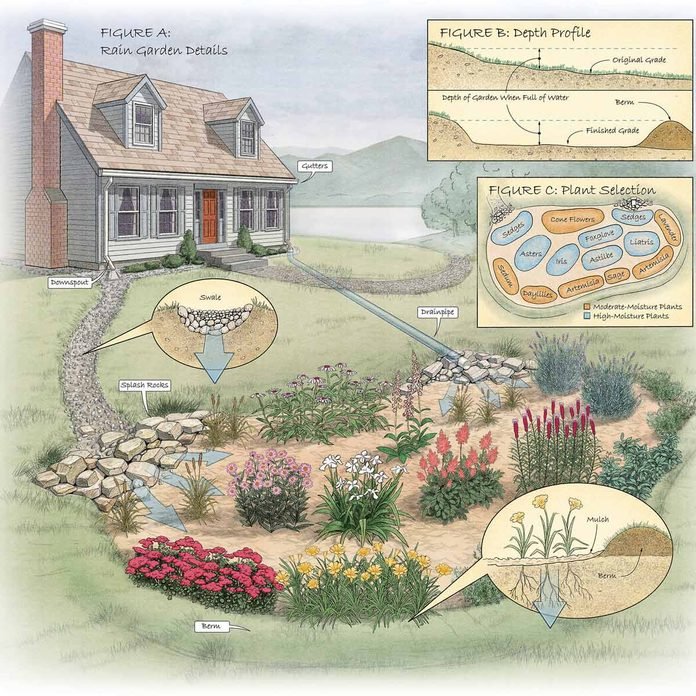By Uriah St. John
Studies have shown that up to 70% of water pollution is caused by run off from homes and lawns. One great way to help fight this is by creating a rain garden! Rain gardens are areas for rainwater to collect that have been planted with native flowers and grasses. When done correctly these gardens can reduce pollution and flooding, as well as provide habitat for pollinators.
 While the ability of wetland plants to filter water is well known, it is less well known that prairie plants can have the same effect on water quality. They do this the same way wetland plants do. The roots of the plant slow down the water which allows particles to settle out and roots to take up chemicals from the water.
While the ability of wetland plants to filter water is well known, it is less well known that prairie plants can have the same effect on water quality. They do this the same way wetland plants do. The roots of the plant slow down the water which allows particles to settle out and roots to take up chemicals from the water.
Rain gardens can also help water quality in an indirect way: preventing water treatment facilities from getting overwhelmed. Many cities, including Delaware, feed their wastewater treatment facilities from both buildings and storm water drains. This is important, because during heavy storms treatment facilities can get overwhelmed by the water and dump the excess straight into the river, both storm water and human waste. Rain gardens help prevent this by retaining water and keeping it from drains, lowering the amount of storm water in our sewers. This also lowers the water level in streams; helping reduce flooding near streams and in your own basement! 

Another huge benefit of rain gardens is that the native plants provide pollinator habitat. While to us our lawns and gardens may seem like they should provide for pollinators, gardens of non-native plants and lawns are virtually useless to them. This is because pollinators depend on specifically native species for their food. Non-natives are often inedible to our wildlife, or don’t provide the proper nutrients animals are adapted to use here in Ohio. So even just a small patch of native plants can be an oasis in a desert to our bees and butterflies.
With all the benefits of rain gardens it is clear why so many people are adding them to low places on their property. It is also only getting easier to create one, as more resources become available online. If you’d like to get started making one of your own, or learn more about what it takes to create one, this fact sheet from the USDA is a great place to start.
Photos courtesy of Family Handyman, Stroud Water Research Center, and Superior Watershed Partnership






